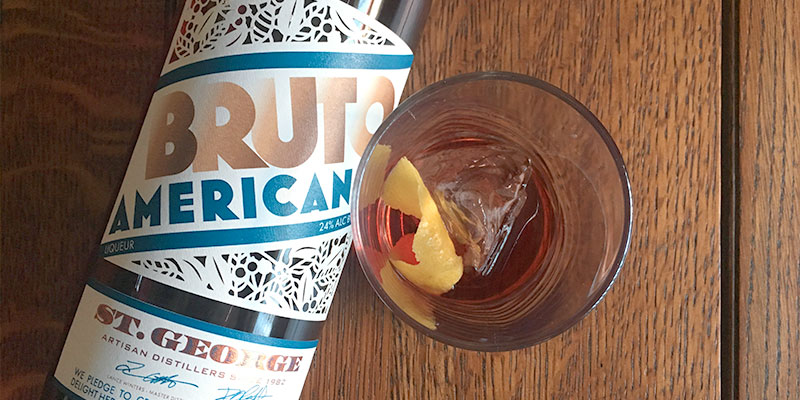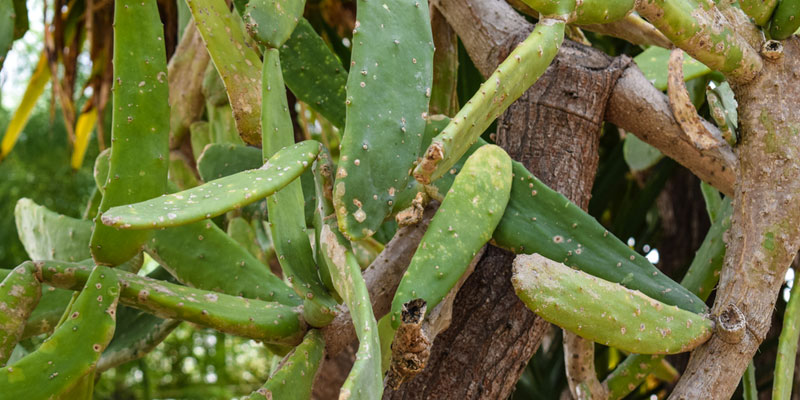What in the world is cochineal? If you answered: “a natural red dye,” you would be correct. If you answered: “the original red coloring in Campari,” you would be correct. If you answered: “a tiny bug that all of us have been eating and drinking without realizing it,” you would also, in fact, be correct.
Cochineal, otherwise known as Dactylopius coccus, is a small insect usually found hanging out on prickly pear cacti in South America and Mexico. They sip delicious cactus juice for sustenance and protect themselves from predators by producing carminic acid. If you harvest these tiny creatures and extract said acid, you can process it and create red carmine dye, a.k.a. cochineal.
Hundreds of years ago, the vivid red cochineal was used in Oaxaca to color prized textiles. As explorers hit the scene, this long-lasting dye became an extremely valuable export, and by the 1800s it was also being produced in other countries for a variety of uses. Then, as the 19th century marched on, artificial red dyes were created — and demand for cochineal sank.
More recently, though, the stuff has seen renewed popularity. As a natural product, it makes some people feel more comfortable, especially after certain artificial red colorings were linked to cancer and discontinued (which is sort of why red M&Ms disappeared for a while). Cochineal is used in all sorts of foods you may not even realize, from cookies to yogurt to sausages. It’s also common in cosmetics like red lipstick and alcoholic products like Campari. That is, it used to be used in Campari.
Campari stopped using cochineal around 2005, and it’s not entirely clear why. Some say it was to appeal to vegan drinkers, or to eliminate the ick factor for certain (American) consumers. Some say it was due to the very rare but real allergic reactions some people experience, which is why products containing cochineal now have to be clearly labeled. Others say variations in processing just made it too difficult to keep Campari a consistent color, whereas artificial coloring can be replicated exactly and indefinitely.
On top of that, there’s a lot of disagreement about whether the switch has changed the taste or body of Campari. Certain bartenders adamantly stamp their feet and insist it has, while others roll their eyes and say it’s all nostalgia. In any case, you can still find the original formula in some countries like Brazil, so if you’re really curious you can find out on your next South American excursion.
Another option: Save the plane fare and turn to some of the new Italian-style amari popping up in the U.S., made with honest to goodness cochineal. The first of these Campari-esque spirits to be produced stateside is the Leopold Bros. Aperitivo. They’ve formulated it to follow the traditional style of Old-World Italian bitters, so now you can enjoy authentic insect infusion in your next Negroni.
Another notable, bitter red booze is Bruto Americano from St. George Spirits, which leans in a slightly different direction. It, too, uses cochineal to attain its ruby hue, but draws much of its flavor profile from the aromas of California. I checked in with Lance Winters, the head distiller, about his approach to putting a West Coast spin on an iconic Italian amaro.
How did growing up in California lead to formulating an Italian-style aperitivo?
“The road to Bruto actually started as the desire to make an amaro. In the process of smelling and tasting individual botanical components, the inspiration for a detour into an aperitivo took hold. When I was exploring how to round out the mid-palate, I started looking for aromatics that were evocative of comfort. As a kid growing up in California in the mid-1970s, I was exposed to lots of incense. I was most drawn to sandalwood, which has a beautiful, sweet, dusty aroma, and balsam fir, which goes sweet and woodsy. We source balsam fir from Maine, and the sandalwood notes come from the bark of the California buckthorn tree, which also has some lovely cinnamon-esque nuances. After a couple of months adjusting the ratios of botanicals, we had the balance we were after.”
Why did you decide to color Bruto the old-fashioned way, using real cochineal? Did you ever consider not coloring it at all?
“I briefly considered not coloring the Bruto red, but I kept coming back to it. I mean, I really love having a festive-looking Negroni. Once I knew that I wanted red, cochineal was the only way to go. We don’t use anything artificial in any of our spirits, and cochineal is really the only natural colorant that gives the depth of color and stability that we needed.”
Okay, tell us about the bugs. The cochineal aren’t sourced locally, are they?
“It’s funny. My wife Ellie and I found cochineal insects in a cactus garden in Santa Barbara just over a month ago, so it probably could be sourced from here. Our cochineal comes from South America, though. Entire villages in Peru and Argentina derive incomes from the harvest and processing of Dactylopius coccus. They use a water process to separate the carminic acid from the insects. We receive that acid in a powdered form.”
So, whether you think Campari is better or worse since leaving insects behind, one detail seems clear: Nostalgia is a powerful thing. It’s the force that fuels every ’80s dance night, and sometimes it’s the inspiration for the botanical bouquet in a distiller’s new creation. So, if you’re feeling wistful and longing for days gone by, it might be time to order a cheery red cocktail that’s laden with history — and colored with cochineal.


